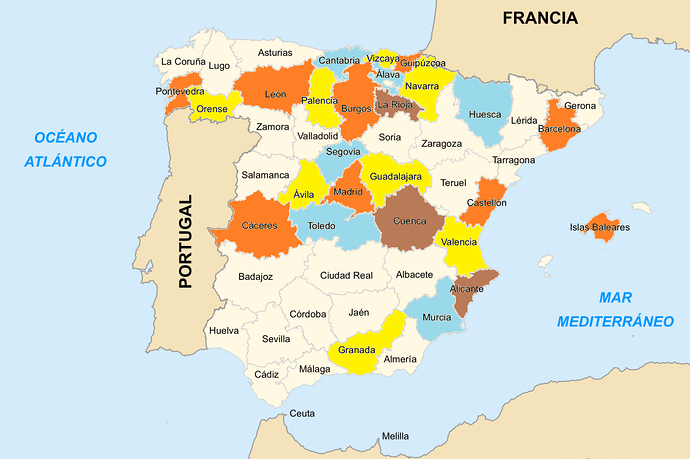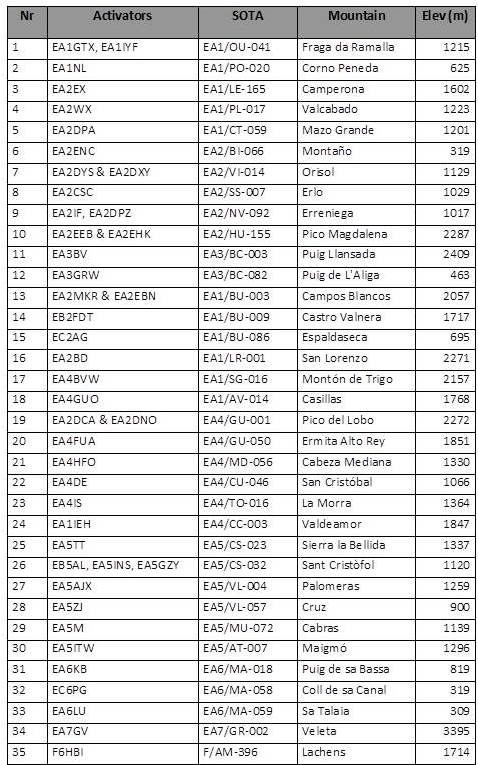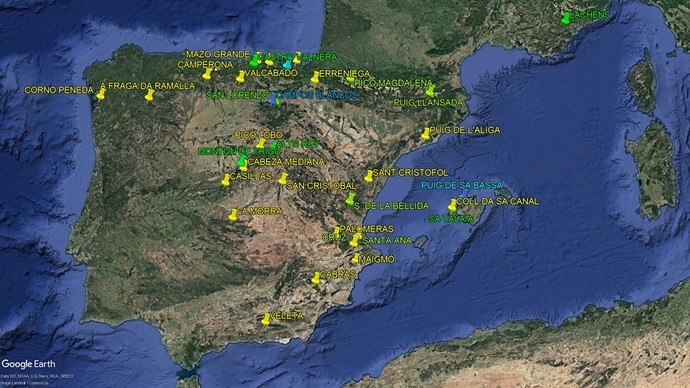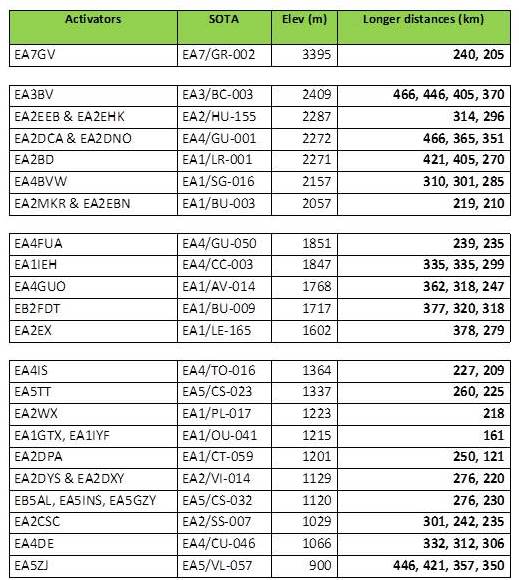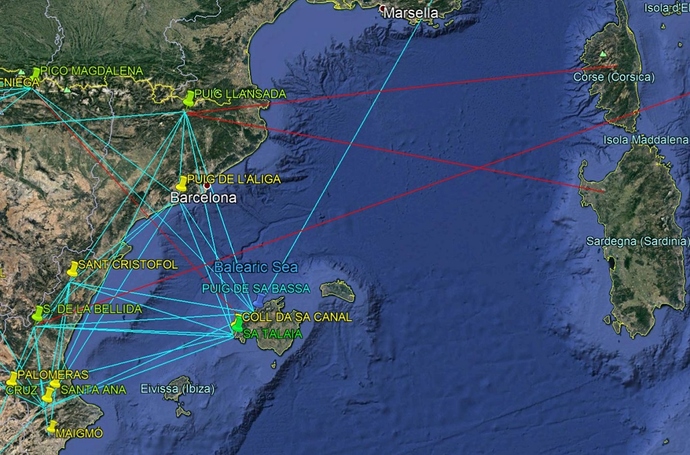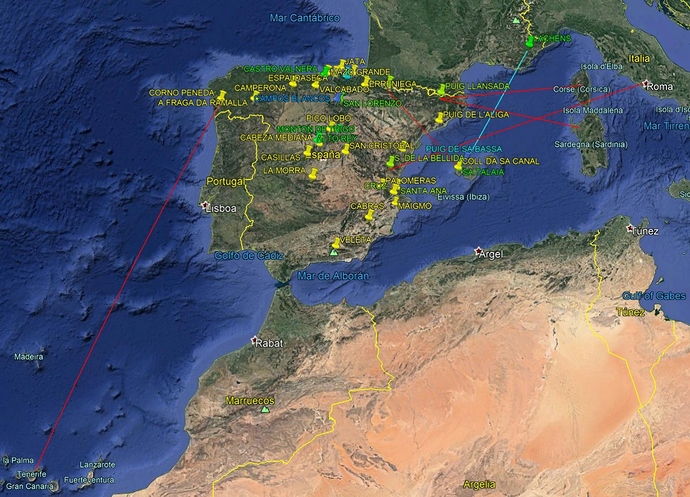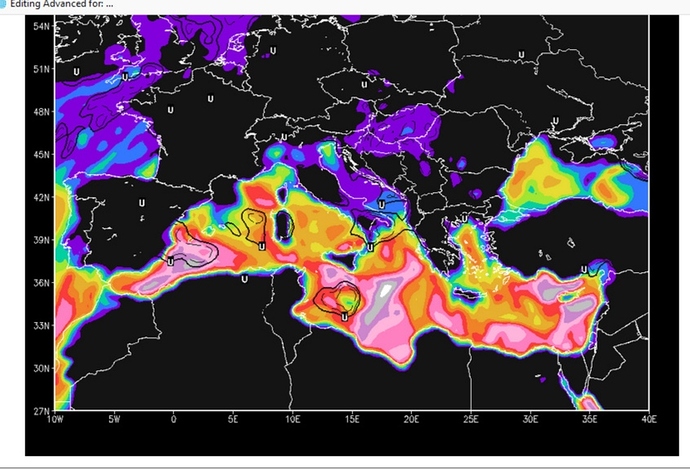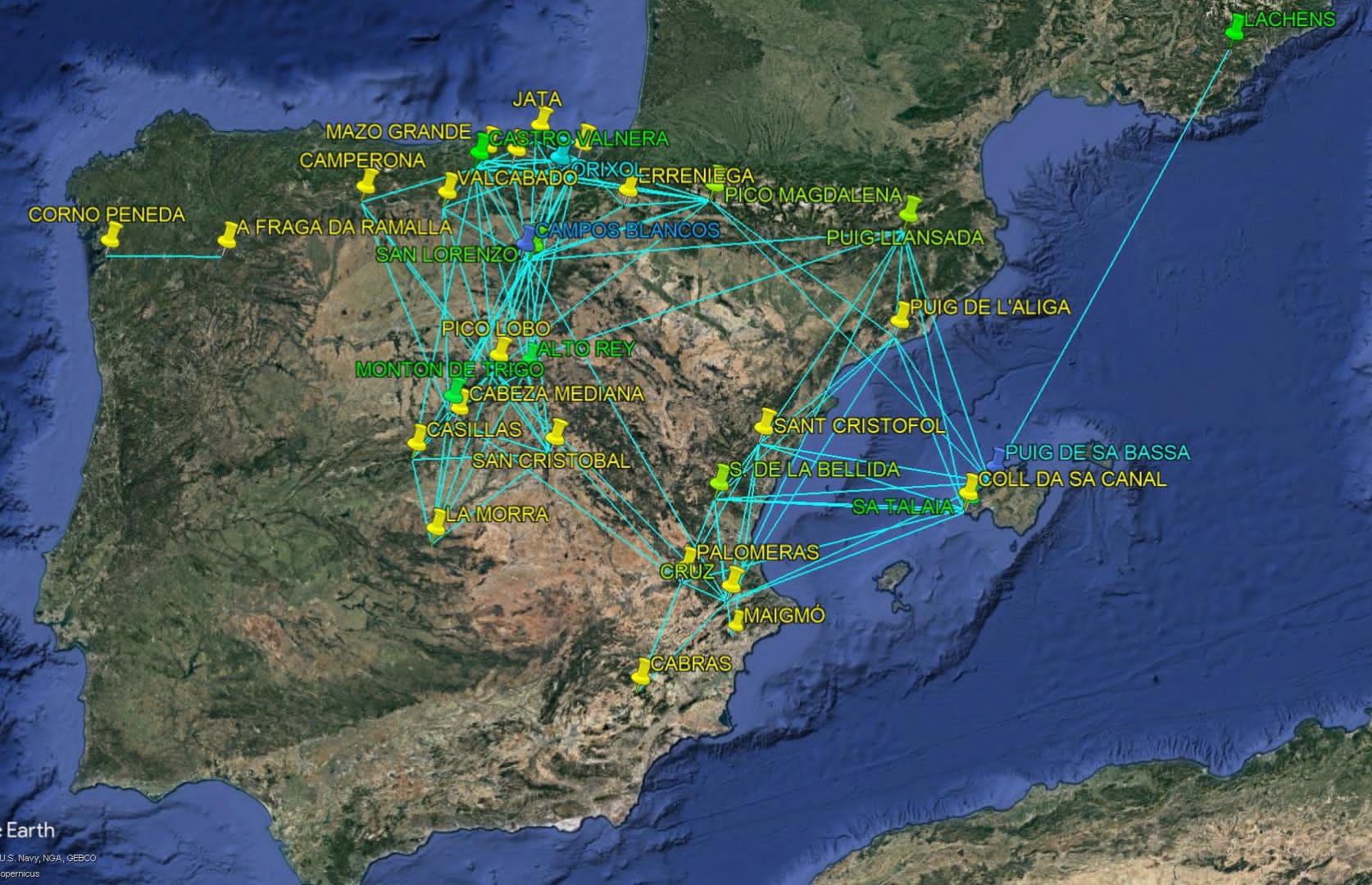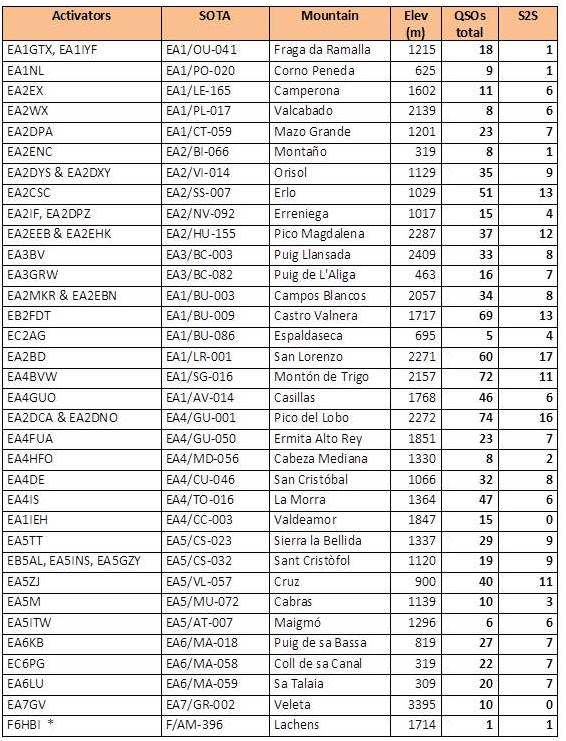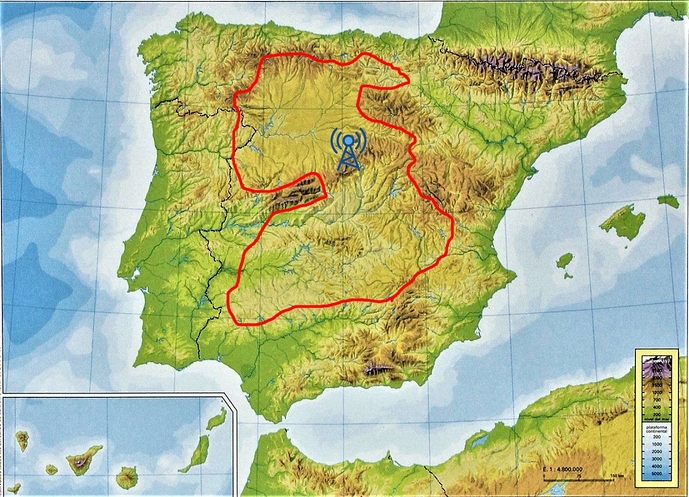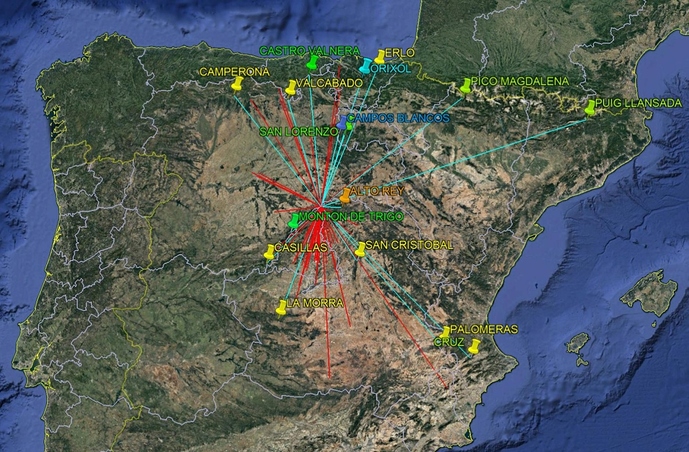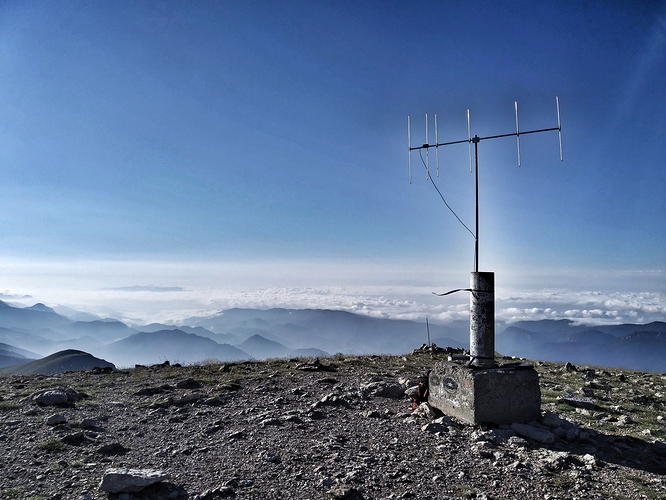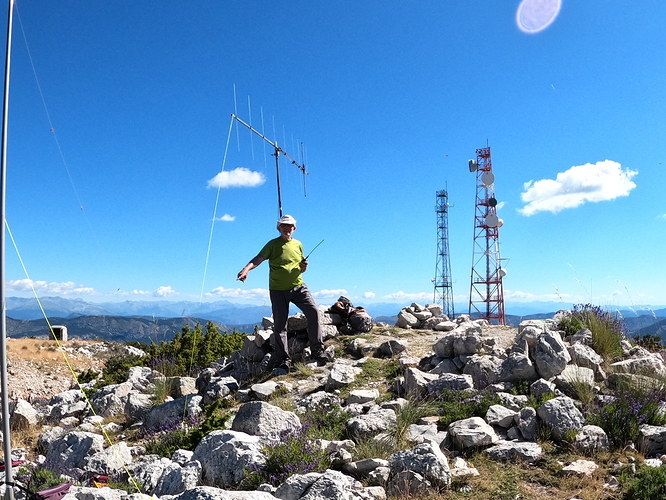As we had previously done before, a group of amateurs and friends proposed a big VHF event: a massive SOTA activation from many different points running in VHF FM.
Activation date: 25th July 2020.
The objectives we set were:
-
Enhance contacts on VHF FM trying to cover long distances.
-
Promote the use of VHF band for which many hams have radio gear on disposal, but that nevertheless is underused nowadays.
-
To spread SOTA scheme and show how it is possible to begin activating using low powered simple gear and small sized antennas, while having a lot of fun.
-
Involve new amateurs by inviting them to chase us and attracting them to SOTA.
-
Suggest going out to elevated areas in the open air to improve their signal coverage towards activated summits in this event.
-
Check and learn about VHF propagation in praxis, to be aware of the influence of elevation, radiated power, the kind of antenna and the effect of the sea.
We published some notes before running the event here:
Today, after a long time dealing with logs and feedback from operators, we analysed the activation and share with you the results.
1.1. Planning the event
We were planning this event for weeks in advance, by identifying the proper summits to get higher coverage. Then we assigned frequencies to the activators to minimize interference and to make feasible chasing them. Then we finally published the plan in the SOTA reflector and in other ham forums inviting them to join to this event.
On July the 25th the activity was developed as scheduled. We are very happy with the results achieved; there was a lot of people involved participating.
Making the allocated Simplex FM frequencies useable for all the simultaneous operators that would meet on air was a bit of a challenge. We decided to assign 16 fixed channels between 145.200 a 145.575 MHz, espaced 25 KHz, so that we wouldn’t interfere with the assigned frequencies for relays or other modes. Then we distributed such channels between the participants. Due to the fact there were more than 16 participant we had to assign some of them to a single channel choosing well separated activators to avoid hearing each other and eliminating any mess with chasers.
1.2. Activators list
There were 35 summits activated simultaneously on VHF FM, spread over 26 regions in Spain, plus one more from France (F6HBI).
Complete list of the activated summits:
Map and name of the activated summits:
2. QSO CONTACTS ANALYSIS
Activators had a great success by logging a huge number of qso that day. Previous announcement of this event helped a lot, as there were more ham than usual QRV on the band waiting for the activators with their radios on.
2.1. Study of factors that influence over the achieved distances
According to the theory, there are several factor who have a strong influence on the RF travel distance in VHF:
-
Summit elevation: the higher the mountain is, the easier it is to overcome intermediate obstacles and lower mountains, thus enhancing an improved coverage.
-
Power out: the bigger the power is (watt), más distancia alcanza esa señal con mejor calidad de audio en el corresponsal.
-
Antenna: we decided to use vertical polarization antennas and therefore just two antennas seem to be right for such thing: a straight vertical or a vertical yagi. The latter are the ones providing higher gain improving travel distance.
- Location next the sea: stations placed near the sea would benefit from an enhanced sea path as tropospheric duct are quite common (temperature difference among atmosphere layers over the sea make the radio signal travels longer distances).
2.2. Distances achieved
Here you can see the bigger distances in kilometers logged in this event. We’ll try to check if the results match well with theory according to the previous factors described in paragraph 2.1.
Chart shows higher summits first, in order to find if there is a good correlation between elevation and distance.
A) Distances achieved inland
In general terms it seems that the higher the mountain the longer the signal travels. There are some curious results among the chart that requires a further analysis:
• EA7/GR-002 was the highest peak (3395 m) but contrary to what we shoud expect the results were not the best but moderate. Why? This operator walked a very long distance accompaigned with a large group of people making his activation quite short. In the other hand, his antenna was a simple ¼ wave vertical, running 5 w, thus reducing his coverage.Last, his summit was in the very South and further apart from most active stations, although he heard EA1/GU-001 at 459 km to the North.
• EA1/BU-003, placed in the group of mountains higher than 2000 meters didn’t achieved the distances like many other summits at similar height, probably obstacled by some other nearby mountains.
• Looking at the group of summits lower than 1500 m iwe are surprised by the good numbers in EA5/VL-057 that, although being a 900 m elevation, achieved long distances. The reason could be he used a very long boom yagi with extra gain improving his coverage.
As a conclusion, a good correlation between height and distance has been confirmed. We should bear in mind that the variability of results is also related to some other factors, like the activation duration, the kind of antenna used, the transmitter power level and even, operation mode (either search and pounce or run mode) and the antenna orientation.
B) Distances over the sea
Contacts over the Mediterranean sea:
Longer contacts over the sea:
Longer distances achieved over the sea:
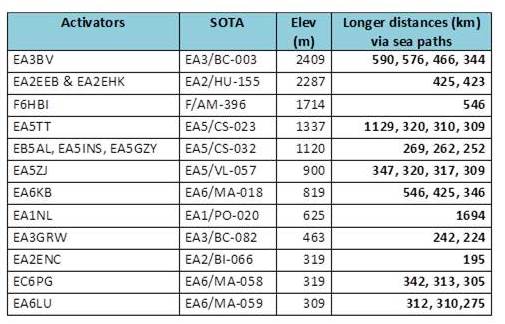
- When comparing the distances achieved due to maritime tropo (B) versus the distances travelled inland (shown in A) we can see that the longer distances were achieved over the sea, as we could expect. The absence of obstacles in the path over the sea and the tropo duct enhanced by the sea made it possible.
This image shows the tropospheric propagation on that specific date, confirming the channels oponed over the Mediterranean sea, and in contrast, the absence of tropo inner Spain:
Some remarkable cases from the previous distance chart:
o From EA5/CS-023 a long distance qso with Italy (Rome) was achieved; at 1129 km.
o From EA1/PO-020 an outstanding qso with EA8CXN, Cesar in the Canary island , was logged, at 1694 km. The fact is thar the Sota activator was running 5 watts to a vertical antenna! Meanwhile, the EA8 operator used a 6 element cubical quad antenna.
o From EA3/BC-003 there were plenty of qso with EA6 and also logged TK and IS0 at 576 and 590 km away.
o There were 3 activators from EA6 (Mallorca) whoworked many ops from EA3 and EA5 over the sea. From EA6/MA-018 a qso with F6HBI/P in F/AM-396 was logged, at 546 km.
o We recorded a single qqso with France from EA2 (northern Spain) who confirmed that tropo was much stronger in the Mediterranean than in the Cantabric Sea.
2.3. S2S contact map
Many S2S were logged that day, as shown in this map:
2.4. Summary chart of QSO and S2S contacts
The next chart summarizes all qso logged plus the S2S from each summit:
- Gerald, F6HBI, reported having a big trouble to find clear frequencies in the scheduled activators QRG; it seems that this part of the band is in use with some personal relays in France and he struggled to hear any of the activators in Spain. Next time we should consider using other frequencies witih him.
3. Geographical analysis
This experience showed a correlation between the achieved distances against the summit elevation. This way, coverage could be predicted in some way, by taking into account the height and the surrounding terrain and near summits.
As a rule of thumb, the higher the summit, the farther the distance achieved. In the other hand, once the signal is blocked by a massive mountain range it would n’t be possible to stablish the contact.
Sample of coverage from the center of Spain, as verified from EA4/GU-001:
The operator located in this high point confirmed areas with open paths and some others completely closed. No way to achieve log distances to the very northwest or to the Mediterranean.
Contactos from Pico Lobo:some far S2S achieved thanks to the reciprocal height from the end operator, overcoming intermediate summits:
If there were Sporadic E of stronger tropo duct in place, we could expect a very different picture.
4. CONCLUSION
-
35 SOTA summits were simultaneously activated (double than in the event in 2019)
-
Big distances achieved within Spain (up to 466 km) and even longer over the sea, being the farther qso with F, TK, IS0, I y EA8, achieving 1694 km.
-
Lots of ham which are not frequent chasers in SOTA got involved from home or traveled to elevated areas in the countryside for chasing us. The VHF FM portion of the band was crowded for several hours during this event.
-
Activators had a lot of fun, logging 122 S2S qso. The complete log uploaded in the Sota Database shows 934 entries.
-
Many operators unaware about SOTA have shown interest for this scheme and want to get involved.
-
This experience opens the gate to future events to check coverage from new unexplored areas.
Thanks everybody for supporting this activity and promote such a good vibrations in the band.
73
EA2BD Ignacio, EA2DCA Alberto.
